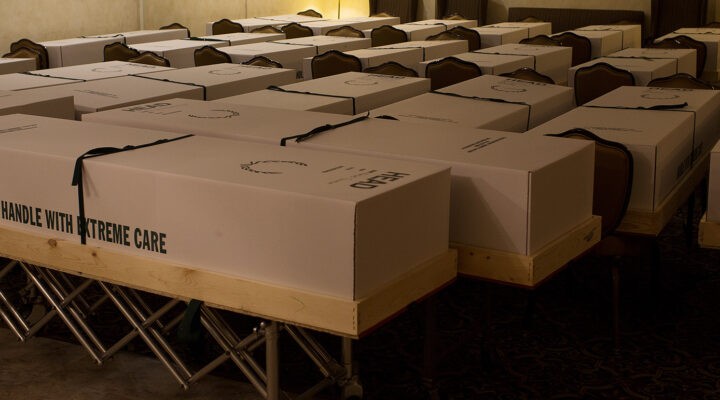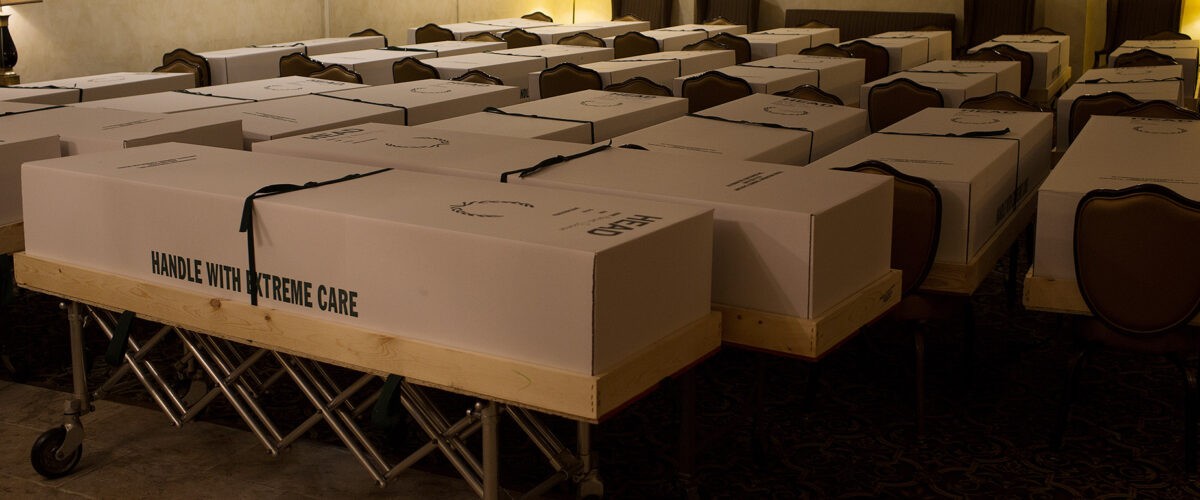With more than 800,000 lives lost to COVID-19 in America alone, observers might wonder why some U.S. congregations have taken a seemingly cavalier approach to fighting the pandemic. One possible answer emerged this week from new survey data released by Hartford Institute for Religion Research.
Less than a third of U.S. congregations have experienced a COVID death.
The Exploring the Pandemic Impact on Congregations project, a collaborative effort of Faith Communities Today, on Dec. 21 released the second wave of its extensive survey of diverse congregational leaders. Among the data buried deep in the report is this fact: “The percent of congregations reporting deaths among their membership increased significantly from 17% to 28%. Among congregations that reported member deaths, the average number of deaths was 2.3 per church.”
That increase is from summer to November, meaning as the first year of the pandemic passed and before the Delta variant hit, less than one in five U.S. congregations had experienced a single COVID death among their membership. With Delta and Omicron now creating a new and fast-spreading surge, the number of congregations directly affected is rising.
As of November, 72% of U.S. congregations had not lost a single member to a known COVID death. How can that be?
Yet according to the extrapolation of this data, as of November, 72% of U.S. congregations had not lost a single member to a known COVID death. How can that be?
One clear answer is race and socio-economic status — which also explains why nearly all the churches protesting mask mandates and vaccine mandates are populated by affluent white people, not persons of color or the poor.
In March 2021, the U.S. Centers for Disease Control reported: “The COVID-19 pandemic continues to deepen health disparities in our country. Long-standing inequalities have increased the risk for severe COVID-19 illnesses and death for many people. This both causes and continues disparities between racial and ethnic minority groups and non-Hispanic white people. Unequal health risks are the result of different conditions where people live, work, learn, play and age — what we call social determinants of health.”
In plain terms, the CDC noted in March that:
- American Indian and Alaska Native people were 3.7 times more likely than non-Hispanic white people to be hospitalized and 2.4 times more likely to die from COVID-19.
- Black or African American people were 2.9 times more likely than non-Hispanic white people to be hospitalized and 1.9 times more likely to die from COVID-19.
- Hispanic and Latino people were 3.1 times more likely than non-Hispanic white people to be hospitalized and 2.3 times more likely to die from COVID-19.
Then the CDC added: “Social determinants of health contribute to racial and ethnic minority groups being disproportionately affected by COVID-19. Discrimination, which includes racism and associated chronic stress, influences each of these social determinants as well.”
“Social determinants of health contribute to racial and ethnic minority groups being disproportionately affected by COVID-19.”
From the earliest days of the pandemic, Black Americans were dying from COVID at twice the rate of white Americans.
Even The Economist has weighed on this from a statistical perspective. It reported in late July: “Faced with these surprising results, a hunt has begun that is as morbid as it is nerdy. Wonks are searching for less obvious variables that do more to explain variation in deaths from COVID-19. And so far the most powerful of them all is inequality,” specifically economic inequality.
While the correlation between economic status and church attendance has not been widely studied, researchers have noted important correlations: A 2015 YouGov survey found that 62% of regular church goers were middle class and only 38% working class. Other studies have found that poorer people tend to believe strongly in God but are less often found in church attendance — perhaps tied to the fact that many of them must work on weekends when most churches gather.
Among all races, COVID initially targeted the elderly for death more than younger people. Given the aging population of most churches in America, it would be reasonable to assume more churches would have experienced these deaths. Yet the data also show that death among the elderly disproportionately fell among those living in nursing homes or care facilities — meaning people who may have lost regular touch with congregations they no longer can attend.
The same likely could be said for the chronically ill or highly immunocompromised — also heavily targeted by COVID — who likely were not in regular attendance at congregations.
“While COVID infections are well-known in most U.S. congregations, they have been spared similar rates of death.”
Even with these possible explanations, it remains odd that so few churches have experienced a COVID death.
The new survey noted that “the percent of congregations reporting members testing positive for the virus increased from 83% in the summer survey to 87% in this research.” So while COVID infections are well-known in most U.S. congregations, they have been spared similar rates of death.
“Based on 28% of churches experiencing the number of COVID deaths indicated, our project estimates that given roughly 320,000 Christian churches in the United States, then approximately 200,000 church members have lost their lives because of the pandemic,” the Hartford report explained. “This should not be a surprising number. Given that one-quarter of the population regularly attends religious services, it makes sense that one-quarter of the nation’s deaths would be within this population. However, given that many churchgoers tend to be older and some congregations were quick to reconvene in-person meetings, we might expect this number to be even higher.”
One additional factor could be that, with a 1.5% death rate among Americans who get infected, it stands to reason that the smaller the church, the less likely it would be to experience a COVID death. The same Hartford research has shown that half of all U.S. congregations have fewer than 65 people in weekly attendance. So from a purely statistical perspective, the larger the church the more likely it should be to have experienced COVID deaths. But that model fails to take into account age, race and economics — the factors that clearly skew the death toll.
Related articles:
Raging at God after my 67-year-old father died of COVID | Opinion by Carol McEntyre
MacArthur asserts ‘there is no pandemic’
New surveys connect the dots between politics, race, religion and vaccination


